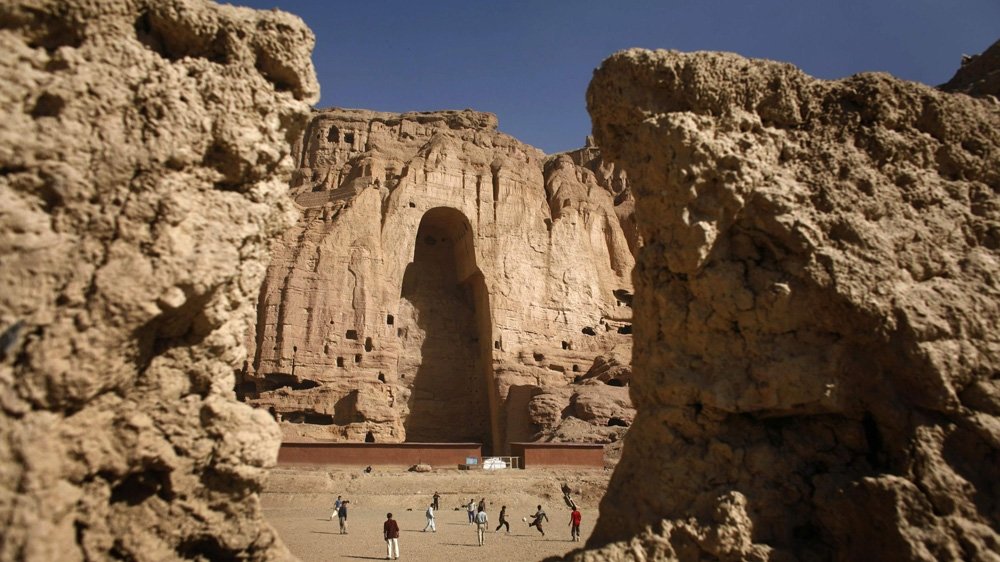Living primarily in the rugged highlands in the country’s centre, the Hazaras are one of Afghanistan’s largest ethnic minorities, accounting for up to 20 percent of Afghanistan’s 30 million inhabitants.
The Hazaras are said to be descendants of Genghis Khan, the founder of the Mongol empire, and the Mongol soldiers who swept through the region in the 13th century.
Their Asiatic features and language – a dialect of Persian – set them apart from other Afghans, including the predominant ethnic Pashtun. While the Hazaras are primarily Shia Muslims, most Afghans follow the Sunni branch of Islam.
A history of persecution
The Hazaras say they are considered outsiders in their own country and have been persecuted throughout history. In the late 1900s, Pashtun King Amir Abdul Rahman Khan ordered the killing of all Shias in central Afghanistan, leaving tens of thousands of Hazaras dead, according to anthropologist Thomas Barfield.
Hazaras were sold as slaves as late as the 19th century.
Those living in rural areas were denied public services. Until recent decades, few attended university or held government positions.
“Hazaras have been systematically discriminated against by Pashtuns and others during the Afghan pre-war periods,” says Thomas Ruttig, co-director of the Afghanistan Analysts Network.
The 2004 Afghanistan Constitution [PDF] granted Hazaras equal rights, and they were well-represented in the administration of former Afghan President Hamid Karzai. Yet, despite their growing political clout, many Hazaras continue to feel discriminated against.
“Even open-minded non-Hazaras with a high degree of education have admitted to me that they feel a certain discomfort when they encounter Hazaras in certain positions of authority in Afghanistan,” says Melissa Chiovenda, an anthropology doctoral candidate at the University of Connecticut.
“They feel they should still be servants and labourers.”
Hazara activists say the government does not protect the interests of the Hazaras. Parts of central Afghanistan, like Bamiyan, the unofficial Hazara capital, are among the country’s poorest, often lacking basic facilities and electricity.
In March, Hazaras held a protest in Kabul against the government’s decision to move a proposed power line project out of Bamiyan, arguing that the decision was yet another form of ethnic discrimination.
Hazara Afghans are among the millions of refugees fleeing to Europe in search of a better future.
During the country’s civil war and subsequent Taliban rule during the 1990s, the Taliban declared war on the Hazara.
“Hazaras are not Muslims, you can kill them,” Taliban commander Maulawi Mohammad Hanif reportedly told a crowd in Northern Afghanistan in the mid-1990s.
While many Hazaras fled to Shia Iran, those who remained risked violence and even death. One of the most brutal events took place in the city of Mazar-i-Sharif in 1998, when thousands of Hazaras were systematically executed, according to a Human Rights Watch report .
Hazaras under threat
Although Afghanistan is no longer under Taliban rule, growing insecurity has unsettled many. Abductions, extortions and violent killings by groups operating under the banner of the Islamic State of Iraq and the Levant (ISIL, also known as ISIS) continue to take place.
Last November, a group swearing allegiance to ISIL abducted and killed seven civilians, including women and children, in the southern province of Zabul. The tragedy brought thousands on to the streets of Kabul to protest against the increasing violence towards Hazaras.
“What happened in 2015 was, from the Hazara point of view, the first time they could really definitively say it is happening to simple Hazaras, not people working for the government,” says Chiovenda.
In recent weeks, Hazaras travelling in civilian vehicles have been abducted and executed by Taliban fighters.
In early June, 25 Hazara men and women travelling in the northern province of Saripul were taken hostage by armed attackers. While five were set free, the fate of the other 20 remains unknown, according to the UN.
The Buddhas of Bamiyan
The Buddhas of Bamiyan were gigantic statues hewn into rock in 6th century AD, when the area was a pilgrimage site for Buddhists. For centuries, the stone sentinels stood watch over the Silk Road.
They were deemed a UNESCO World Heritage site and became an important source of tourism revenue for the region. In 2001, then Taliban leader Mullah Mohammed Omar declared them “un-Islamic” and had them destroyed, reducing the once-largest standing Buddhas and 1,500 years of history to rubble.
Whether the Buddhas should and can be rebuilt remains contested. Last year, a 3D light projection gifted by a Chinese donor re-imagined the statues.
In 2013, German restorers from a UNESCO advisory body built pillars with feet-like bases on the site, reigniting the debate. “There are different schools of thought,” says Ruttig.
“I personally think it will be very difficult to rebuild them from the fragments that are left.”
Source: Aljazeera
